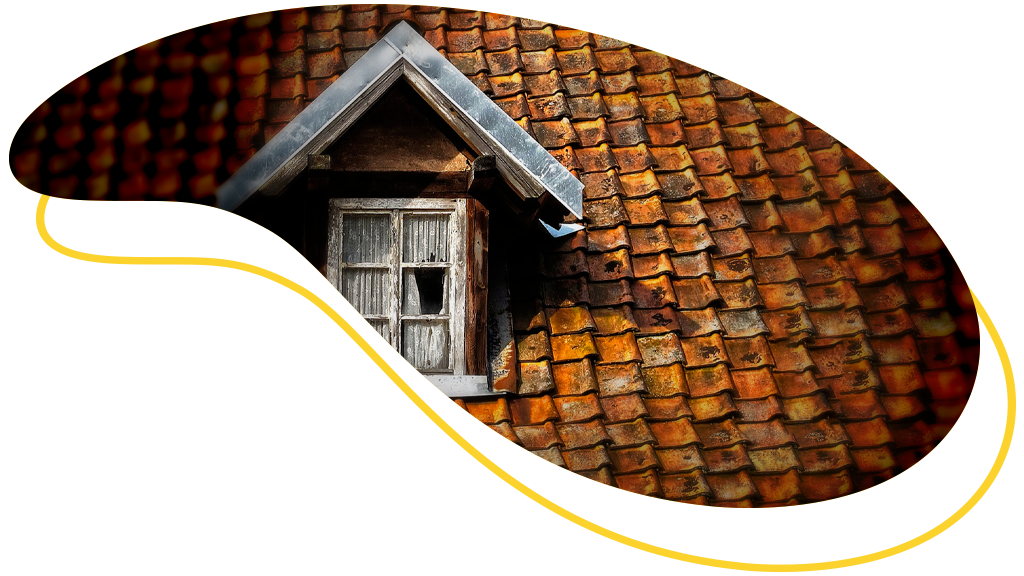Learn More
x




How old is the roof of your house? What is its current state? Have you ever stopped to think about the construction process, what material it is made from, and how long they last?
From freezing temperatures and snow storms, to heavy rain, wind and blazing sun, there’s no doubt that your home’s exterior is subject to a variety of extreme conditions. This can be especially difficult on your roof, which serves as your home’s first line of protection from Mother Nature.
Even with frequent maintenance and punctual repairs, some building elements have a limited useful lifetime, which is the case when it comes to a roof. We need to be careful to keep every meter of our house up and running. This will not only help you avoid headaches, but also helps to prevent higher costs in the event of accidents, as damage caused by misuse or lack of maintenance is not covered by your home insurance.
To determine the useful life and maintenance of your roof, it is important to consider a few factors:
These factors combined can guarantee a roof that will last more than 50 years if you do everything right, and if you don’t they can make sure your roof sees no more than 10.
The remaining life of your roof can affect your insurance rates. The longer the time, the lower the value. That’s because your roof provides critical protection for the rest of your home. A roof that needs to be replaced can easily lead to leak losses or greater damage on stormy and/or windy days.
But no one is obligated to know everything about construction, especially in a country with construction styles so different from those we are used to. So let’s talk about different roofing materials, their durability and how they can be affected by the weather.
Slate is a siliceous-clay metamorphic rock formed by the transformation of clay (or volcanic ash) under pressure and temperature, hardened into thin sheets. In Brazil, it is widely used in flooring or as an external wall covering.
In the US, it is widely used for roofs as it is very beautiful and is quite resistant to most weather conditions, including sun, heat and wind. If properly installed, it doesn’t require a lot of maintenance and can last for over 100 years!
However, the investment is one of the highest. The average cost of a slate roof is between $600 and $1,500 per square. In addition, you may need to reinforce your home’s structure to support the weight of heavy tiles.
Ceramic roofs (or terracotta tiles) are the ones we are most familiar with. They are usually the ones we draw in our childhood house designs.
This type of tile, in addition to being beautiful, is one of the most economical options. The clay roof not only protects your home, it also reduces your energy costs in summer thanks to its ability to repel heat and maintain an ambient temperature.
In addition to resisting the natural heat and decay of coastal regions, they can also withstand hurricane winds and can last for 50 years or more. Most come with a warranty of at least 30 years. The cost per square of clay tiles is around $600 to $800. But once installed, there is little maintenance required.
Concrete roofs are very popular and versatile. They can be styled and painted to mimic the look of other tile styles including stone, slate, wood and clay.
Concrete is made of water, sand and cement. That is, it is extremely resistant. And depending on the way it’s installed, it may not need a lot of maintenance.
Asphalt shingle roofing is considered to be the most popular of all the roofing installed in new homes today. It consists of a series of layers of asphalt and canvas sheet on top of a roofing and insulation board and a final reflective roofing sheet made of minerals or an asphalt and gravel overlay. It provides excellent waterproofing and because they are flat, an asphalt roof can generally resist hurricane winds.
It’s a great idea if you need a cheaper option, as it costs between $250 and $400 a square foot. The downside is that the durability is much lower, somewhere between 15 to 30 years.
Architectural shingles are similar to asphalt but are a kind of premium version. They are considered not only prettier and can imitate more expensive roofing materials, but also more durable because the layers are triple the density of asphalt.
You can count on the lifetime of your architectural tiles to be 25 to 30 years, although extreme weather conditions can shorten that time a bit, and it will cost from $250 to $400 per square foot.
The level of protection a metal roof offers your home can be determined by the width and/or thickness of the tiles. If the thickness of the panels (usually aluminum or steel) is greater, it is more durable.
The proportions and quality of the chosen metal will decide the durability of your roof, which can vary between 20 and 50 years. It will also impact the size of your investment, which will fluctuate with your choices.
Wooden roofs are stunningl, aren’t they? And they can be of two types: rustic or machine-cut tiles. Neither is as practical as the more modern materials, but many people choose them for their beauty, and we can’t judge as many of the other materials are often made to look like wood.
Another attractive element of wood tile roofing (especially cedar) is that it provides protection from insects and decay, but to ensure the protection is in place, experts suggest conducting an annual inspection for warped or cracked shingles. which can affect water resistance. With proper care and maintenance, you can expect your wooden roof to last over 30 years.
They can cost up to $900 per square foot.
You bought a house and didn’t bother to find out how old the roof is? Not sure if it’s part of the original build or if it has been replaced or repaired? Look out for some signs that can advance your roof’s condition before you call for maintenance.
Typical warning signs that you need a new roof include:
If your roof is showing signs of being at the end of its life, contact a contractor, get a quote, and ask for recommendations on what you can build on the structure. This way, you can start saving and decide on the best time to invest in a new roof. The amount needed will easily fall below the cost of an emergency repair.
Our advice is to carry out periodic inspections, as should be done on the ventilation system. Constant care, maintenance and attention will ensure you always have a safe roof and possibly lower rates on your home insurance policy.
Want more maintenance tips? See these fall maintenance tips while there’s still time!
Learn More

One of the best ways to reduce your monthly bills is to invest in renewable energy. This can often be done with systems you can build yourself.

Coverage for damages from a heating oil spill is not included in a Homeowners Insurance policy. In this article, we list everything you need to know about heating oil spills in your home and how to protect yourself from damages.
Learn all about Homeowners Insurance and how it can protect your dream home and your family in Uncle Sam's land.

We are an insurance company made by people for people. A community that speaks tyour language, with people who care about your future! Here you can find all the protection and care that a home offers. Come and join us!
Get a Quote

Need help? Chat with BRZ!
x